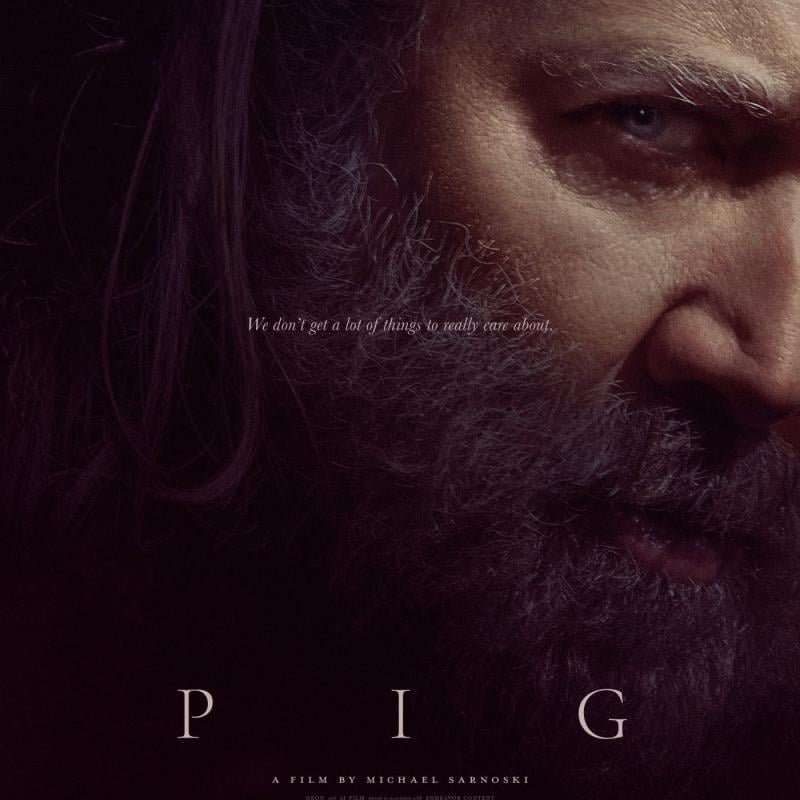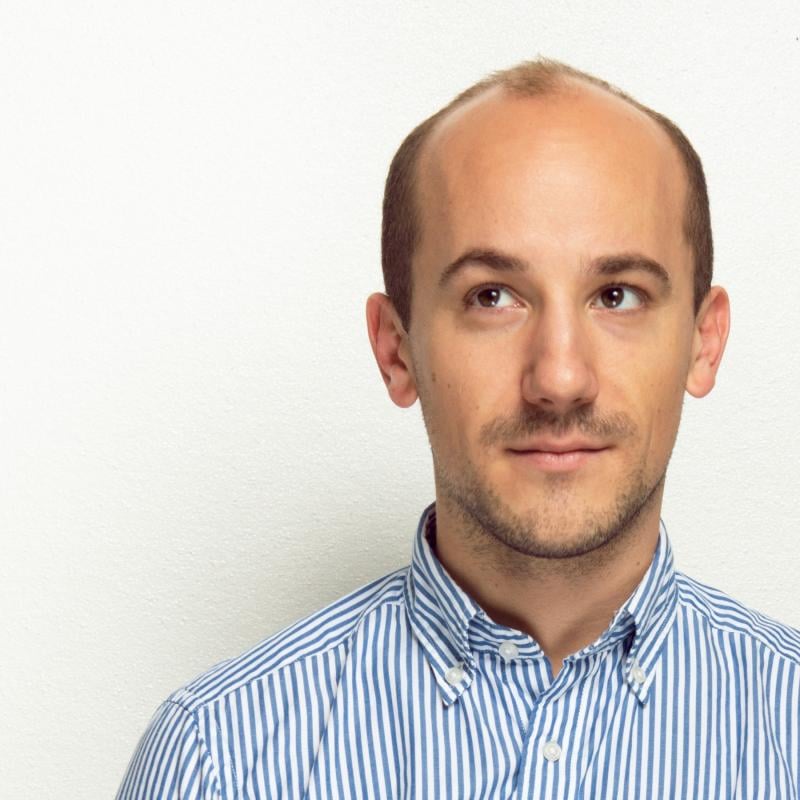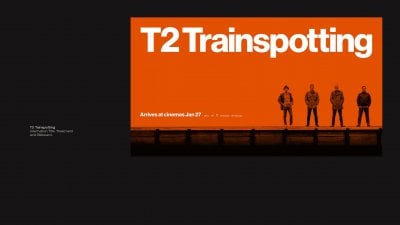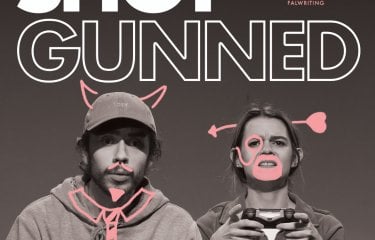No Time To Design: in conversation with Tom Brooks
28 October 2021
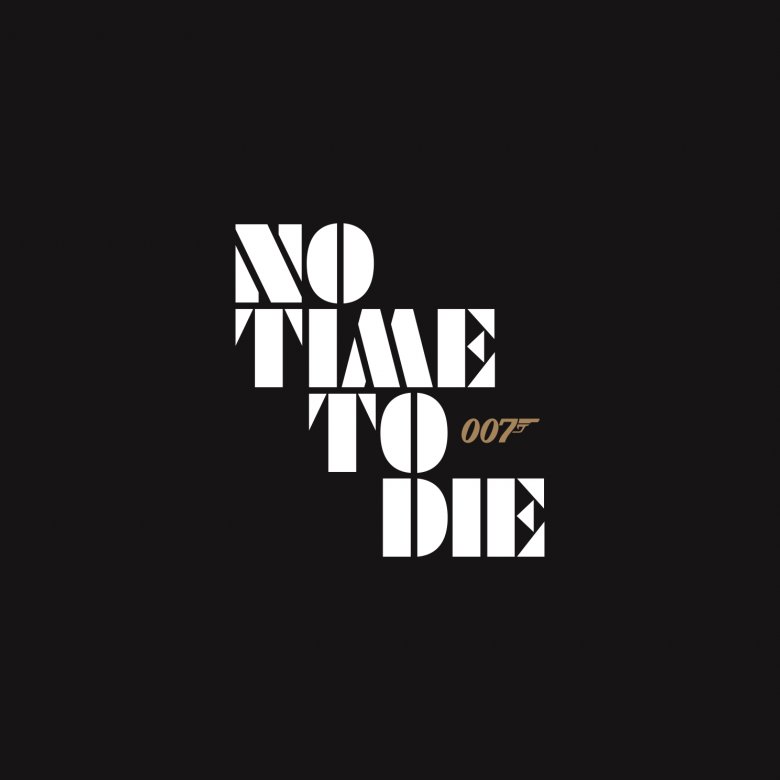
The Falmouth graduate has designed the logo for the latest instalment of the James Bond series.
Tom Brooks, Senior Designer at Empire Design and BA(Hons) Graphic Design graduate, is no stranger to working on prestigious projects. In the last five years alone, Tom has worked on campaigns for modern day film classics Darkest Hour, Three Billboards Outside Ebbing, Missouri and 1917.
Tom is now into his fourteenth year as Senior Designer at Empire Design, and has just created the logo for the latest instalment of the 007 franchise, No Time to Die.
We spoke to the Senior Designer to discover the secrets to great graphic design and learn Tom’s take on the importance of life outside of work.
Can you tell us a little bit about your time at Falmouth?
There’s so much to say. The course was great and the tutors were fantastic – sometimes I might have rubbed them up the wrong way, but I think I’ve always done that!
I have lots of memories of the social scene. Currently there’s a bar called the Palacio Lounge, which is on the Moor. It’s evolving into a classy place where you can get a mimosa and eggs Benedict, but it used to be the main nightclub in Falmouth. I knew it as “Remedies”… we had plenty of messy nights there! It was a horrible place really, not all of my memories of it are positive but there are plenty of memories nonetheless.
It couldn’t be further from that now. When you next walk in, imagine all the tables removed, the fine spirits replaced with cheap lager and a stripper’s pole installed upstairs. Then you’ll be pretty close to what it was like.
The Chain Locker and The Front are still there, which is nice to see. Whenever I go back, I feel a sort of kinship with the students who are wandering around – I feel a bit jealous of them too if I’m being honest.
It sounds like you made the most of things away from your studies!
I did – I want to stress how important it is that students enjoy their time at Falmouth. It’s not all about the work; make sure you enjoy your free time. It’s your last chance to enjoy such a wonderful place, totally unburdened by the stresses of working life.
People sometimes forget that there’s more to education than getting a job; what it’s really about is creating a well-rounded individual. Try and stay free and open and you’ll get the best out of your time.
Bringing it back to the academic side of things, students at Falmouth often work to live briefs to help them prepare for the industry. I’m sure they’d be curious to know what the brief for the James Bond logo looked like.
Well, our company has been working on Bond since Casino Royale in 2005, so our brief is our personal relationship with EON Productions.
At this point we inherently understand the Bond brand, so the company feels comfortable coming to us and saying ‘you know what we like, provide us with some options’, which is a very strange thing for such a high-profile project.
I’m really glad they took a bit of a risk by going with my design – when it first came out some people said it was an amazing logo, and some people said it was the worst thing they’d ever seen!
Is receiving an open brief helpful or unhelpful?
I actually quite like having limitations. You’ll have heard the phrase ‘think outside the box’; well, metaphorically you need to have a box to go outside it! If there’s no box, it’s hard to know where you’re testing the limits, and you can end up creating something quite conservative.
Lots of money gets put behind these big projects, which often means that you end up with something that is risk averse. I’m really glad they took a bit of a risk by going with my design – when it first came out some people said it was an amazing logo, and some people said it was the worst thing they’d ever seen!
I liked that it was divisive, because you know you’re doing something right if you make some enemies along the way.
It’s interesting that they were willing to take that risk – there could only be one or two film franchises as big as Bond. Do you think the industry is starting to take more risks when it comes to film design?
Yes, you’d probably put Marvel and Star Wars up there, but aside from those I’d agree. But to answer your question - I think so. It seems to be becoming a bit looser again, which is exciting to see.
There’s a film called Pig with Nicolas Cage that’s just come out, which I did the main poster for with my friend Gary. We also did a teaser poster for it, which was just the hairy side of a pig with a pig icon in it.
It doesn’t have the name of the film on it - in fact, it only has Nicolas Cage’s name - but it was still well received. The company who asked us to do that are giving us some amazing work at the moment. I love that they’d be up for doing something as brave and out there as that.
What’s your design process like?
I’m a nostalgia vulture. When you’ve been a graphic designer for as long as I have, you begin to realise there aren’t any new ideas, but there’s always re-hashing of old things. I love plumbing the depths of the design archives - you can see how things repeat themselves. Not in an uninspiring or unoriginal way, I’d add.
Trawling through old designs made sense for No Time to Die. The film is incredibly introspective. It was this sense of “looking back” that inspired the typography of the logo. I wanted to evoke an innately ’vintage spy novel’ feel that wouldn’t look out of place on the original Ian Fleming books, John Le Carré and 60s spy movies like “The Ipcress File”.
What advice would you give for students who are looking to approach the industry?
Opportunities won’t fall in your lap, so you need to make things happen for yourself. My first employers found me via my website. Setting up a small online presence for yourself is really important. Don’t be ashamed of putting your work out there – you’ll always feel that as an artist, but you have to push past it. Swallow your pride and let your website do the talking.
You don’t have to be a fame-hungry social media influencer, but you do need some kind of presence to point to.
When I was starting out Instagram didn’t exist, Facebook was one year old and MySpace was still going strong. I accept the landscape has changed significantly, but good work is a timeless commodity. What people are looking for is potential, not someone who’s the finished article, because no one is straight out of university.
Aside from a good website, what would a young designer need to do to get a job placement with you?
They’d need to demonstrate a willingness to learn and have confidence in themselves. And I like people who have a sense of humour. I get a lot of grovelling emails from people who take themselves very seriously; I’ve had several people contact me who wanted to go down a very specific career path at the age of 16, which is crazy.
Ultimately though, the work speaks for itself. I’d also want to meet someone first-hand. At Empire we tend to have people in for a couple of weeks, and we aren’t just judging them on the work they produce but also the interactions they have with us.
Working as a graphic designer is a job, but it’s also a bunch of humans operating in a confined space for 8 hours a day and there needs to be some kind of a rapport.
I’m not exaggerating when I say that being a kind, charming person is just as important as being a good designer.
